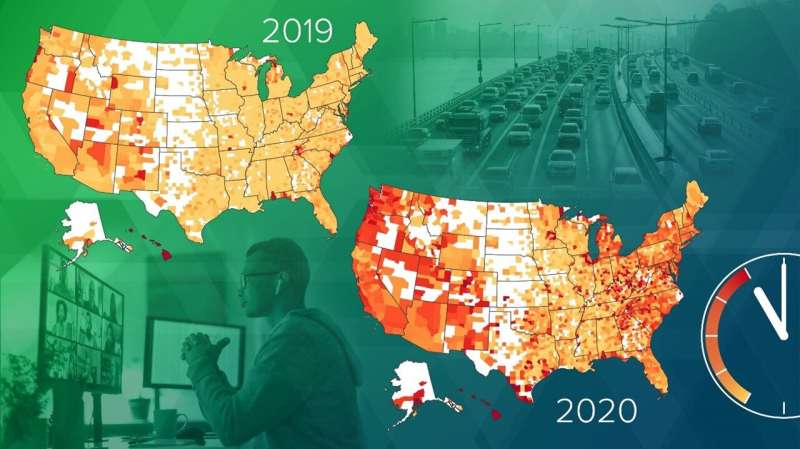How the pandemic changed human mobility patterns
Researchers at Oak Ridge National Laboratory have empirically quantified the shifts in routine daytime activities, such as getting a morning coffee or takeaway dinner, following safer at home orders during the early days of the COVID-19 pandemic. These insights, published in the Journal of Transport Geography, could help officials better understand traffic patterns and supplement the response to emergencies or crises.
Using SafeGraph data of GPS markers at millions of points of interest, the team identified the times when people were most active over 24-hour periods and how those differed from pre-pandemic timetables.
“We saw the largest differences in temporal and geographical behaviors during the morning and evening in 2020. With an increase in remote work and virtual schooling, we can see how people’s activities changed when normal commutes changed,” said ORNL’s Kevin Sparks.
Notably, the sheer size of the datasets being ingested, cataloged, queried and analyzed for research required the team to build a significant compute infrastructure based on scalability and connectivity.
Kevin Sparks et al, Shifting temporal dynamics of human mobility in the United States, Journal of Transport Geography (2022). DOI: 10.1016/j.jtrangeo.2022.103295
Citation:
How the pandemic changed human mobility patterns (2022, May 2)
retrieved 2 May 2022
from https://phys.org/news/2022-05-pandemic-human-mobility-patterns.html
This document is subject to copyright. Apart from any fair dealing for the purpose of private study or research, no
part may be reproduced without the written permission. The content is provided for information purposes only.

Researchers at Oak Ridge National Laboratory have empirically quantified the shifts in routine daytime activities, such as getting a morning coffee or takeaway dinner, following safer at home orders during the early days of the COVID-19 pandemic. These insights, published in the Journal of Transport Geography, could help officials better understand traffic patterns and supplement the response to emergencies or crises.
Using SafeGraph data of GPS markers at millions of points of interest, the team identified the times when people were most active over 24-hour periods and how those differed from pre-pandemic timetables.
“We saw the largest differences in temporal and geographical behaviors during the morning and evening in 2020. With an increase in remote work and virtual schooling, we can see how people’s activities changed when normal commutes changed,” said ORNL’s Kevin Sparks.
Notably, the sheer size of the datasets being ingested, cataloged, queried and analyzed for research required the team to build a significant compute infrastructure based on scalability and connectivity.
Kevin Sparks et al, Shifting temporal dynamics of human mobility in the United States, Journal of Transport Geography (2022). DOI: 10.1016/j.jtrangeo.2022.103295
Citation:
How the pandemic changed human mobility patterns (2022, May 2)
retrieved 2 May 2022
from https://phys.org/news/2022-05-pandemic-human-mobility-patterns.html
This document is subject to copyright. Apart from any fair dealing for the purpose of private study or research, no
part may be reproduced without the written permission. The content is provided for information purposes only.
